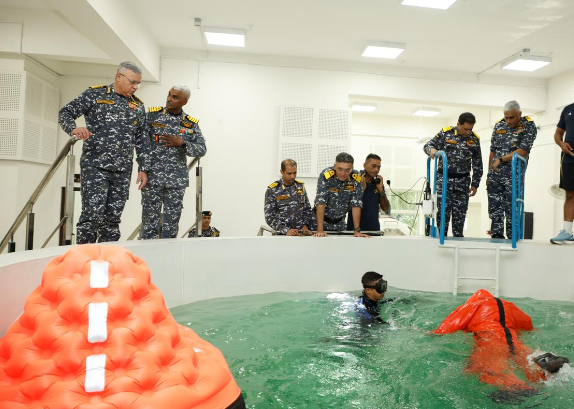Kalvari Submarine Escape Training Facility – VINETRA
The Kalvari Submarine Escape Training Facility, called Vinetra, was officially opened on 13 September 2024 by Vice Admiral Rajesh Pendharkar at INS Satavahana in Visakhapatnam. This facility is an important step toward improving the Indian Navy’s preparedness and ability to handle submarine emergencies.
Purpose and Importance
Vinetra is designed to help train the crew of Kalvari-class submarines on how to escape during emergencies. This is very important for the safety of the sailors working underwater. The creation of this facility is part of India’s Aatmanirbhar Bharat programme, which focuses on building more defence technology within the country, reducing the need to depend on other nations. L&T Defence built the facility and includes:
- A five-meter-high escape tower where submarine crews can practice escaping.
- A diving basin right next to the tower, providing a place for realistic underwater escape training.
These features help both new and experienced submariners practice and improve their escape skills.
Training Objectives
The main goal of Vinetra is to make sure submariners are well-prepared for emergencies. By practicing escape procedures, they gain more confidence and are better equipped to handle underwater situations that may arise, ensuring the safety of everyone on board.
The opening of this facility not only improves the individual skills of submarine crews but also strengthens the overall operational readiness and safety of the Indian Navy. This development is a big step forward in boosting India’s naval capabilities.
About INS Satavahana
INS Satavahana was the first ship of its class, commissioned in 1988. It played a key role in the Indian Navy as a surveillance vessel, which means it was used to keep an eye on activity in the ocean. The ship had advanced radar and communication systems to help monitor maritime (sea) activities. INS Satavahana participated in many naval exercises, which are practice missions to improve teamwork and coordination between different ships and parts of the Navy. These exercises helped make sure the Navy could work well together during real missions.
The ship was named after the Satavahana dynasty, an ancient Indian kingdom known for its contributions to trade and culture. This name reflects the connection between India’s rich history and its modern naval force.
Month: Current Affairs - September, 2024
Category: Defence Current Affairs








